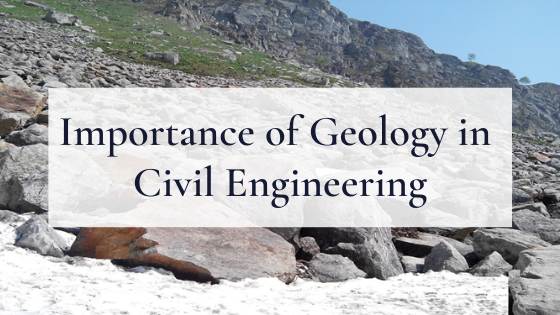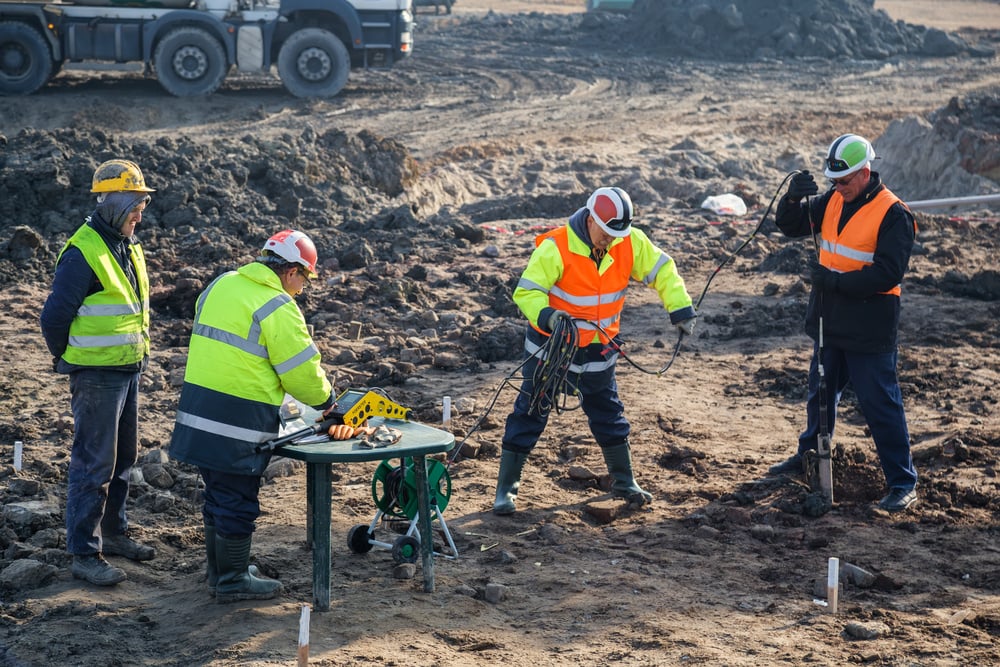The 3-Minute Rule for Geotechnical Engineering For Construction Projects
The 3-Minute Rule for Geotechnical Engineering For Construction Projects
Blog Article
Indicators on Geotechnical Engineering For Construction Projects You Need To Know
Table of ContentsGeotechnical Engineering For Construction Projects for BeginnersHow Geotechnical Engineering For Construction Projects can Save You Time, Stress, and Money.Geotechnical Engineering For Construction Projects - The FactsThe 8-Second Trick For Geotechnical Engineering For Construction ProjectsThe Geotechnical Engineering For Construction Projects IdeasGetting My Geotechnical Engineering For Construction Projects To WorkGeotechnical Engineering For Construction Projects Fundamentals ExplainedNot known Facts About Geotechnical Engineering For Construction Projects
Accompanying this raised intricacy comes geological and ecological factors that impact the design of the foundation, which is arguably one of the most integral part of any advancement. People need to rely on that structures, bridges, and highways will certainly stand the examination of time. A Geotechnical designer advises on how a structure can best be supported giving its distinct conditions What's concealed listed below the surface area of the ground is most likely one of the most vital piece of info that a Geotechnical Engineer desires.
These examples are then examined by the lab to figure out dirt make-up (Geotechnical Engineering for Construction Projects). The breakdown of sand, silt, clay, and other products existing in the soil, helps the designer establish what one-of-a-kind characteristics the website has and what the ramifications of those may be. Of program soil make-up is just one test that can be carried out on examples
A Biased View of Geotechnical Engineering For Construction Projects
Based on these examinations, there may be much more dirt borings that are drilled, or the engineer might have sufficient information from the initial examinations to make a suggestion to the customer on exactly how ideal to wage their project. Outcomes are typically reported via borings logs which reveal the dirt structure and features at a variety of depths.
Geotechnical designers are accountable for understanding the homes of natural sources and using this understanding to create safe, economical layouts for construction jobs. It is a crucial part of any type of civil design task, as it is utilized to establish the suitability of a website for building and to make certain the framework's safety and security.
This consists of executing laboratory tests on the samples and using geophysical techniques such as seismic refraction and electric resistivity studies. This information is made use of to evaluate the site's viability for building and to identify the kind of structure that should be used. Geotechnical engineering evaluates dirt problems, determines prospective threats, picks an ideal structure system for the recommended framework, and establishes the ideal structure style for a provided project.
The 9-Minute Rule for Geotechnical Engineering For Construction Projects
The framework might become unsteady or collapse without proper dirt stabilisation, resulting in costly repair services and prospective injury. The stablizing procedure involves utilizing numerous techniques to boost the stability of the dirt, such as compaction, grouting, and the enhancement of strengthening products. Without dirt stabilization, the dangers linked with building tasks would be much greater, and the outcomes much less trusted.
It is a procedure made use of to improve the residential or commercial properties of dirts. Geotechnical engineers conduct website investigations to analyze the dirt's residential properties and determine prospective risks. They additionally design foundations and various other frameworks that require to be improved the site, thinking about the soil's attributes. They develop and apply soil stabilization methods, such as including cement, lime, or other maintaining representatives, to improve the soil's toughness and stability.
Geotechnical Engineering For Construction Projects - Truths
Geotechnical engineers are essential in assisting to guarantee that soil stabilization is done properly to ensure that the framework is secure and safe. Geotechnical design is additionally made use of to assess site link soil problems and recognize potential threats. This consists of examining possible flooding, landslides, and various other all-natural catastrophes that can affect the foundation.
Geotechnical designers utilize this knowledge to execute website examinations, soil, and rock screening, and to analyze the outcomes to identify the ideal layout criteria for a task. This information is used to guarantee that the structure, preserving walls, slopes, and other structures constructed on or within the subsurface materials have sufficient stability and resistance to external loads, such as quakes, wind, and water.
These structures call for a deep understanding of the actions of the subsurface materials, in addition to the capacity to manage the influence of excavation and building and construction on the surrounding environment. Geotechnical engineers use their experience to identify the appropriate style criteria for these structures, such as the shapes and size of the tunnel, the toughness of the supporting rock, and the kind and quantity of assistance needed.
Along with the design and building of frameworks, geotechnical engineering also plays a critical role in the recovery and maintenance of existing frameworks. As structures age, they might experience deterioration or other problems that influence their security and efficiency. Geotechnical designers use their see expertise to evaluate the problem of these structures, identify the sources of the troubles, and develop strategies to address them.
What Does Geotechnical Engineering For Construction Projects Do?
In this article, I will certainly discuss the role of geotechnical engineering and the sorts of problems geotechnical engineers solve. Geotechnical engineers (geotechs) are included in nearly every type of civil design job. Every framework is supported by dirt or rock unless it is drifting, flying, or dropping down.
Geotechs are generally most included at the start of a task. Geotechnical Engineering for Construction Projects. A few of the jobs that a geotech may be accountable for are checking out subsurface conditions, determining needed lab screening of soil and rock, translating the subsurface expedition outcomes, and creating reports that document the website conditions and give recommendations for foundations, fill specifications, incline security, and so on
It is not unusual for geotechnical designers to specialize in just one of the locations provided above and research that subject their whole career. Geotechnical design is an essential element of any civil design task. Regardless of exactly how excellent a structure is developed, it will not be excellent for long if the foundation is poor.
Geotechnical Engineering For Construction Projects Can Be Fun For Everyone

Oftentimes, points that might not appear essential become important years later on when concerns occur. One last thing to keep in mind: geotechnical engineering is wed to geology. Regardless of how great your engineering expertise is, if something crucial is missed out on in the geologic characterization at a site, your knowledge may not save you.
Jese lives in West Virginia with his spouse and child. He delights in crawling about on any landslide he can locate and hanging around fly angling on the water. He can be found on LinkedIn. I wish you go right here enjoyed this week's article by guest author Jese Vance. If you have an interest in your firm possibly joining the Civil Engineering Collective, please call us right here or call us at 800-920-4007. I wish you'll join us.
Some Known Factual Statements About Geotechnical Engineering For Construction Projects

Geotechnical Design is the engineering connection between human beings and planet. Previously, application of geotechnical engineering was based on trial and error.
It is very important to create the structure to hold up against all-natural and synthetic loads. Loads can be vertical or lateral. It is very important to know the dirt problem prior to designing the kind and depth of foundation required for the structure. In order to know the subsurface soil problem, a geotechnical investigation is called for.
The Main Principles Of Geotechnical Engineering For Construction Projects
Once the examination results come, the Geotechnical Engineer analyses the record, which details the dirt and rock homes groundwater condition and the linked dangers. The sort of foundation required to develop the structure is after that determined. Based upon the referral of the Geotechnical Engineer, the structural designer after that designs the framework. Report this page